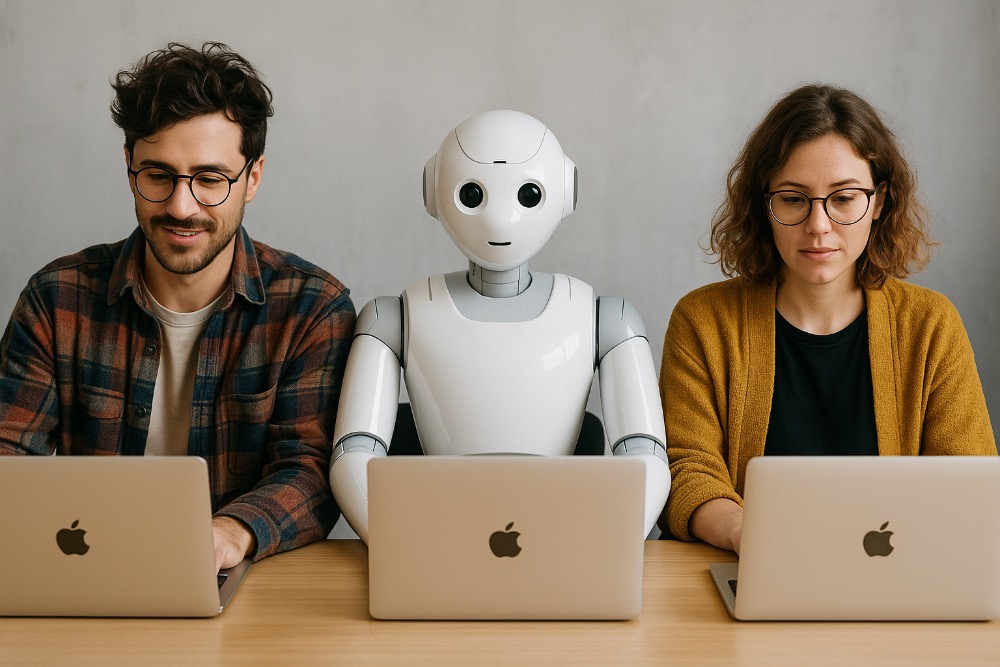There’s a lot of noise – and, understandably, a bit of fatigue – around AI at the moment. It’s everywhere: in headlines, pitches, and product updates. For many creative studios, it feels like yet another thing to figure out while managing the day-to-day realities of running an agency.
But behind the hype, something genuinely valuable is taking place. The best agencies aren’t chasing every new tool or adding more people just to keep up. They’re looking inward – reviewing roles, rethinking how their teams work, and using technology to make delivery smoother, faster, and more efficient.
This shift isn’t about replacing people. It’s about helping them spend more time on the work that creates real value – the thinking, creative problem-solving, and collaboration that clients actually pay for.
Why I believe the future studio will be built around people and technology
In a previous article, I advised agencies to leverage technology before hiring more people if they’re planning to scale. That advice still stands, because in most agencies, growth doesn’t stall due to a lack of people – it stalls because of how people’s time is being used.
Too many talented teams are buried under process, reporting, and admin, when their time could be better spent on higher-value work. That’s where technology – particularly automation and AI – makes a real difference.
The future creative studio will still be powered by people, but supported by intelligent systems that take care of the repetitive, time-consuming tasks that limit capacity and slow growth. Humans and robots working together isn’t a futuristic idea – it’s already happening.
The division of labour is changing
Agencies still rely on designers, strategists, and account leads, but these roles are now supported by tools that handle structured, repetitive, and data-heavy work.
AI enhances the strategic and creative process by helping teams explore ideas, surface insights, and sharpen campaign thinking. Automation platforms take care of reporting, optimisation, and scheduling. Project systems track timelines, budgets, and dependencies automatically, reducing the need for constant oversight.
This balance allows people to focus on what genuinely requires human judgement – interpreting client needs, shaping creative direction, and solving complex problems with empathy and experience.
Build automation into your systems from the start
When I help agencies implement new technology – whether that’s a CRM, project management platform, or HR system – I always look for solutions where automation is built in rather than added later.
Automation works best when it’s embedded in the system’s design from day one. When it’s part of how the platform operates, adoption happens faster, and the benefits are visible immediately. Teams can use built-in workflows, triggers, and templates straight away, rather than treating automation as a “next phase” that may never arrive.
This approach speeds up ROI and makes automation part of everyday agency life, rather than a feature that sits underused.
AI and automation aren’t the same
Although they’re often mentioned together, AI and automation serve very different purposes.
Automation is about efficiency – creating reliable, repeatable processes that reduce manual effort.
AI is about intelligence – helping teams research, think, and create with more context and less friction.
Both are powerful, but the real impact comes when they work together.
The human advantage
Introducing technology into a studio doesn’t reduce the need for people – it changes how and where they add value.
A strategist can use AI to uncover stronger insights and evidence faster, freeing up time for interpretation and creative thinking. A designer can generate quick concept visuals without trawling through endless stock imagery. A project manager can automate repetitive updates and focus on leading delivery and supporting the team.
When used well, automation and AI don’t replace creativity; they create space for it.
How I approach this in my audits
When I carry out an agency audit, I don’t just evaluate structure, systems, and profitability – I also look for opportunities to leverage automation and AI to create capacity and support growth.
That means mapping where time is being spent and identifying where technology can reduce manual effort without compromising quality. In some cases, it’s about automating project tracking or resource planning. In others, it’s about using AI tools to streamline research, briefing, or reporting.
In every instance, the goal is the same: to free up time and energy for the work that moves the agency forward – improving profitability, raising creative standards, and building stronger client relationships.
The future creative studio
The hybrid studio isn’t on the horizon – it’s already here. AI and automation are now built into many of the tools creative teams use every day, often without even realising it.
However, the agencies that will benefit most aren’t simply the ones adopting new technology. They’ll be the ones that intentionally design how people, process, and platforms work together, ensuring that technology enhances creativity rather than diluting it.
Agencies that design their operations around this balance between people and technology will find growth easier and more sustainable. They’ll be able to scale without losing the creativity and culture that make them unique.








